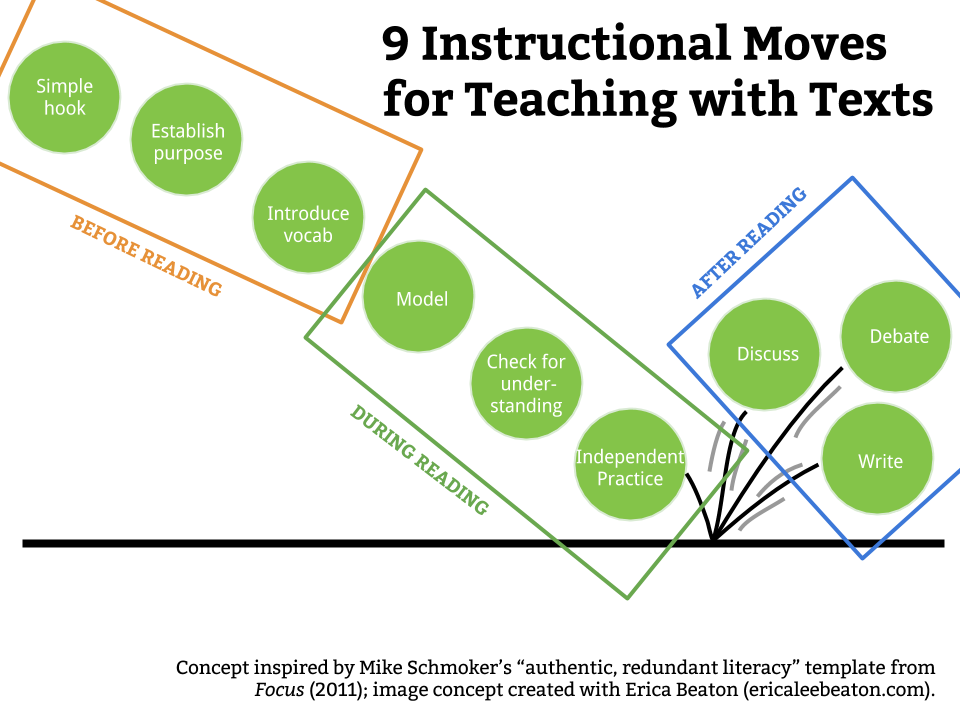Many times early on in my career, I would run into a situation where a given strategy — say, modeling higher-order reading — wasn't working like I wanted it to, and so I would go and seek a new strategy. This created a cycle: try, fail, find new, try, fail, find new. This used up precious time and energy.

But what if, instead of abandoning the Strategy That Didn't Work Today, I decided that, with more practice, more attention to the cultures of my students, this might very well be exactly the right strategy?
This is basically what underlies the Nine Moves for Teaching with Texts (see Figure 1) — we often don't need New, we need Used, tried and true, the simpler and robuster the better. Instead of wandering away from the power of Modeling, we need to double down into that and figure out how best and most powerfully to do it with our particular kids in our particular classroom in our particular community. Rather than looking up some vast, complex contraption for getting kids into a text, we instead ought to ask, what is the simplest means through which I might make what we're about to read relevant to kids? What would be the most efficient way to get their schema about the environment activated prior to reading this week's AoW? Through practice, we find that hooking can happen quickly, through just the right question or through several short rounds of Take a Stand.
The next time you're considering moving away from a strategy, ask yourself:
- Why did I use the strategy I'm considering moving away from? Was it validated by some kind of research? Did someone I respect recommend it to me?
- Is it likely that my implementation of the strategy today would match my implementation of it after twenty more attempts? Would there be value in me practicing this and giving myself time and space to develop expertise with it?
In reflecting on these, you may just talk yourself into putting off the unceasing search for New and putting on the much more empowering pursuit of mastery.
Leave a Reply